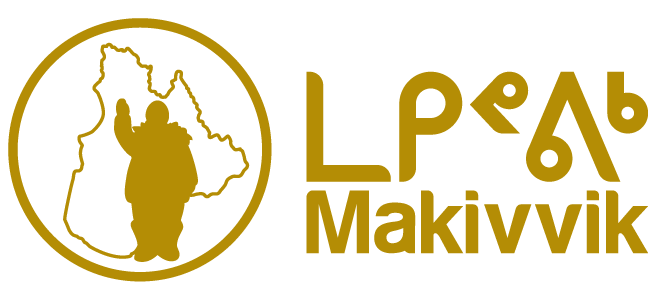Event will impact both the environment and the community
The landslide that occurred near Kuujjuaraapik this spring was the second largest in the last 150 years. Occurring on the morning of April 22, about eight kilometres upstream from the villages of Kuujjuaraapik and Whapmagoostui, the landslide covered a span of 1.8 kilometres in length and 500 metres in width along the riverbank. It triggered the dumping of about 40 million cubic metres of debris into the Great Whale River
.
Kuujjuaraapik Mayor Anthony Ittoshat went to see the affected area by air shortly after it happened. “I was in complete awe. Just flabbergasted,” he said. “I was just not used to seeing something like that, it was unusual.”
Unusual, but not without precedent. Michel Allard, a geomorphologist at Laval University, was one of the members of a response team, made up of representatives from the community and government officials, organized by KRG’s Civil Security Department, who met after the event. Allard has been conducting research for more than 40 years in northern Quebec, studying landforms and processes like erosion, sedimentation, and the effect of permafrost. He said while climate change and permafrost did not play a role in this event, there have been other landslides in the lower region of the Great Whale River in the past, some of which have been studied and radiocarbon dated from the 19th century, and one from more than 2,200 years ago.
He explained the land surface in the area is only about 8,000 years old. Back then a body of water called the Tyrrell Sea covered part of the land. When the glaciers melted over Hudson Bay, many thick layers of “sensitive” clay were deposited. The clay is made of microscopic plates that are assembled together, with empty spaces between them.
“The clay being sensitive, means that it is solid, but if you look at it with a microscope you can see that the structure is like a house of cards,” he said, and they are easy to knock apart if the clay becomes saturated with water. It turns into fluid mud.
While the presence of clay in the soil was the main factor causing the landslide, it was triggered by something else, he said, suggesting the erosion of the bluff by the river, which made the clay face of the bluff steeper until it fell in on itself. If a cliff face falls off, the water would saturate the soil underneath, liquifying the clay, causing it to flow out.
Whatever the cause of the landslide, its effects are visible in the river. Not only mud was deposited, but millions of cubic metres of debris, including sand, boulders, organic matter in the soil, and trees, all of which ended up in the Great Whale River. A mud plume now extends into Hudson Bay.

Mayor Ittoshat recently returned from two weeks of goose hunting and went to the river to assess the situation. “The water did look murky, so I put my hand in it and it disappeared completely in less than an inch of water,” he said. But more importantly, at this time of the year the community would have nets out in the river catching fish and selling them to the hunter support program.
“But we put a stop to that because I understood there could be a release of some gases that may be harmful to the environment,” he said. As a result, the local Hunters Trappers and Fisherman’s Association has been asked to get samples of the fish normally caught this time of year to send to Makivvik’s Research Centre, to see if they should continue to be harvested from the murky water.
Allard said the provincial government’s Ministry of Transportation believes the water will stay murky for this year at least, and maybe longer. This will cause a change in both water temperature and the sedimentation at the bottom of the river. Also, the thousands of trees that were uprooted when the landslide occurred will stay on the riverbed, or piled on the shore, decaying.
“The water quality will be affected for sure,” he said.
While the various government departments continue to monitor the area, taking specialized topographical imagery and measurements to assess the possibility of other such landslides occurring, the risk does not seem high. “We don’t see another high bluff right on the river shore like the one that just ruptured,” Allard said, adding that the two communities are situated on a thick sand delta, about 30 metres above the river, so they are not at risk of being affected by a landslide themselves.
But there are safety concerns for boaters. Mayor Ittoshat has gone on the radio to remind people to be extra careful going along the river, as there is visible debris, even large pieces of wood sticking out of the water, which are not moving.
“What we were used to in the past has completely changed forever, so it’s a new learning curve for all of the boaters here,” he warned. “We will ask them to proceed with extreme caution for the next few months at least.”
MTQ and public safety officials have also warned locals not to go within 100 metres of the site of the slide, as the edges may still be unstable.




